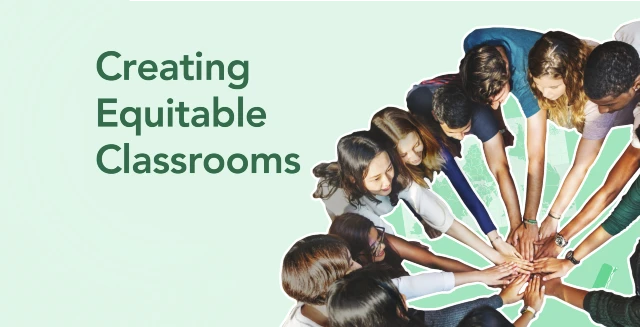
It is more crucial than ever to promote fairness in the classroom in the diverse and connected world of today. Establishing an inclusive and supportive learning environment requires making sure that all students, regardless of their circumstances or background, have equal access to possibilities for achievement. This blog will discuss equity in the classroom, its significance, and eight practical methods for promoting it in your learning environment.
What Does Equity in the Classroom Mean?
Giving all kids the tools, chances, and assistance they require to thrive intellectually, socially, and emotionally is known as equity in the classroom. Equity, as opposed to equality, which treats every student equally, acknowledges that every student has unique needs and obstacles, necessitating the use of various strategies to help them all reach their maximum potential. This method considers variables including language, gender, race, ethnicity, socioeconomic status, and learning capacities.
Why Equity in the Classroom is Important
Promoting equity in the classroom is essential for several reasons:
.webp)
- Fairness and Justice: Every student deserves a fair chance to succeed, regardless of their background or circumstances.
- Academic Achievement: Equitable practices can help close achievement gaps and improve overall student performance.
- Social and Emotional Development: An equitable environment fosters a sense of belonging and support, which is crucial for students' social and emotional well-being.
- Preparation for a Diverse World: Students who experience equity in the classroom are better prepared to navigate and contribute to an increasingly diverse and global society.
8 Strategies for Equity in the Classroom
Here are eight effective strategies to promote equity in the classroom:
1. Start with Yourself
Developing self-awareness is the first step toward advancing equity. Consider your preconceptions, prejudices, and presumptions toward pupils from other backgrounds. To improve your knowledge and abilities, take advantage of professional development options that center on diversity, equity, and inclusion. You may help your pupils learn in a more egalitarian atmosphere by acknowledging and resolving your own biases.
2. Model Equity for Your Students
You establish the atmosphere in your classroom as a teacher. Set an example of fairness, empathy, and respect for every learner. In your encounters, exhibit inclusivity and exercise mindfulness in allocating your attention and resources. You provide a strong example for your kids to follow when you practice equity.
3. Be Flexible with Online Learning
The move to online education has brought attention to already-existing educational disparities. To support equity in a virtual environment, adapt your teaching strategies and standards. Give pupils a variety of opportunities to interact with the content and show that they comprehend it. Make certain that every student has access to the tools and assistance they need, and provide options for those who might encounter difficulties.
4. Address Inappropriate Remarks
Addressing incorrect comments and actions in a timely and efficient manner is essential to establishing an egalitarian classroom. Establish unambiguous rules for polite discourse and step in to address offensive or discriminating remarks as needed. Take advantage of these occasions to educate students about the value of inclusion and diversity in the classroom.
5. Create an Equitable Classroom Environment
Beyond just having enough space, a classroom can be egalitarian. Organize your space such that every student feels welcome and included. Present a variety of resources and materials that represent the experiences and backgrounds of your pupils. Create a respectful, encouraging environment where all kids are made to feel important and involved.
6. Accommodate Different Learning Styles
Students' requirements and learning styles vary. Differentiate your instruction to account for these disparities to achieve equity. To reach every student, employ a range of instructional strategies and resources. Offer extra help and resources to kids who require them, as well as enrichment programs for high achievers. You can guarantee that every student has the chance to achieve by attending to their specific needs.
7. Examine Your Teaching Materials
Make sure your teaching resources are inclusive and reflect a range of viewpoints by critically evaluating them. Steer clear of resources that promote stereotypes or marginalize particular communities. Include readings, illustrations, and exercises that showcase the diversity of both your pupils and the wider community. This promotes a more inclusive learning atmosphere and aids students in seeing themselves reflected in the curriculum.
8. Give Students a Voice
One of the most important components of equity is giving kids a say in their education. Give children the chance to express their thoughts, opinions, and experiences. Provide students with outlets to express themselves and support student-led conversations and projects. You can make your classroom more inclusive and responsive by appreciating and using student input.
Conclusion
Encouraging fairness in the classroom is a continuous process that calls for dedication, thought, and action. Teachers may improve the inclusive and supportive learning environment for all students by putting these techniques into practice. Recall that ensuring equity in the classroom involves more than just allocating the same resources; it also entails identifying and meeting each student's particular needs to secure their success.
Are you prepared to create a more fair learning environment in the classroom? Consider your methods first, then look into how you can use these techniques. For additional tools and assistance in advancing diversity and inclusion in education, check out our blogs right now to learn more about Increase Student Motivation.